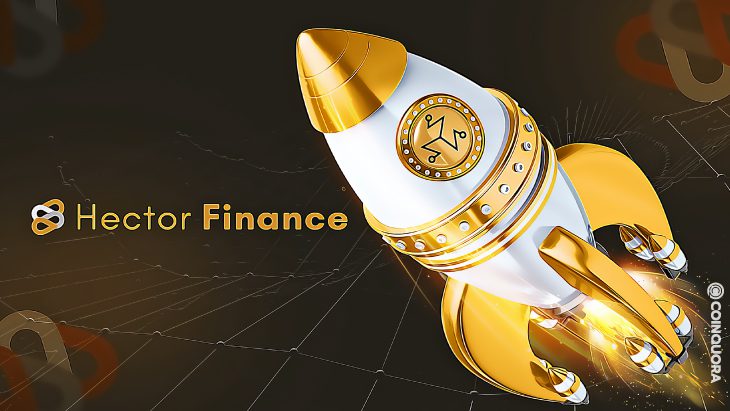Hector Finance has successfully launched TOR, its much-awaited stablecoin, and a key component in the Hector ecosystem. Hector Finance has also enabled yield farming for the TOR Stablecoin. Currently, $TOR LP Farming has surpassed $3.5M TVL with only 800 beta testers and investors are earning 60% APY making TOR yield farms one of the best in the market and providing the most consistent yield farming on the FTM chain.
TOR stands for Tyche Owned Reserve. Tyche was the governing tutelary deity who oversaw a city’s wealth and prosperity, as well as its fate. She is the daughter of Aphrodite and Zeus or Hermes in Greek mythology, and her role at the time was to deliver messages to humans about external occurrences beyond their control. Tyche is the Greek goddess of luck, chance, providence, and fate.
Terra, one of the most successful algorithmic stablecoins in the space, is the inspiration behind TOR. TOR has the goal of making $HEC more deflationary while also providing the Fantom chain with its own algorithmic stablecoin.
TOR can only be created by burning HEC. The HEC pricing oracle, built with Time Weighted Average Price, can be used to swap TOR for newly minted HEC. Oracles are an important part of any stablecoin’s base functionality. In the context of blockchain technology, an oracle is a mechanism designed to supply data to smart contracts. In general, a Stablecoin is only valued and trusted if its price remains constant. The price of TOR is $1. What kind of ‘backing’ does it have? TOR’s backing is made up of two layers:
- Smart-contract algorithms and the HEC/stable LP
- The $100,000,000 Hector Finance Treasury
How does TOR work?
The Hector utility coin (HEC) is the TOR Stablecoin’s counterpart. Hector’s price rises when demand for TOR rises, according to supply modulation. The primary mechanism for keeping pegs in place is expansion and contraction. TOR’s stability is ensured via a simple swap mechanism: at any time, 1 TOR can be switched for 1 dollar’s worth of HEC. If the value of TOR falls below $1.00, buyers can purchase it and use the method to redeem it for $1.00, allowing them to profit. Demand for TOR rises when buyers do so, causing the price to rise again until it reaches $1 USD. These financial incentives function quickly to keep TOR stable.
Since Hector Finance owns the majority of HEC/DAI and HEC/USDC, sufficient liquidity is ensured when a TOR redeem operation occurs. Despite the existence of a curve pool as “Layer 0” for shifting TOR back and forth, it is still needed to mint/redeem on a much less frequent basis. The price of HEC will (slightly) increase or drop as a result of the mint/redeem at Layer 1. Although the price of HEC has no impact on the minting/redeeming of TOR in Layer 1, if the price of HEC drops more than expected/wanted, the Hector Finance treasury will be used to stabilize the value of HEC through buybacks and burns.
Hector Finance’s goal of combining the rebase model with enhanced scarcity will be made possible thanks to TOR. Deflation is the ultimate goal. Because TOR can only be minted with USDC or DAI which is then used to burn HEC, the demand for HEC rises as well. TOR will soon be available for use as collateral in Hector Bank, the decentralized lending and borrowing network built by Hector Finance in partnership with Ola Finance. When TOR is deposited into the lending pool, an oTOR token is provided to the supplier, and the oTOR bears all of the lending interest.
The Road Ahead for Hector Finance
Hector Finance aims to bring as much value to the $HEC token as possible. The project’s main goal is to achieve zero inflation so that everyone’s share of the pie grows over time. The supply will eventually be lowered to the point where it reaches a number that allows for sufficient burns while also providing competitive rewards. What steps will it take to become deflationary? They will mix the best of both worlds: a rebase project with a competitive APY (in comparison to farming and node projects), as well as an extensive ecosystem of utility to boost the HEC token’s value.
The demand for the HEC token will rise as the token’s utility grows. With the addition of utility to the token, APY becomes less essential over time, as the value of purchasing the token is now a combination of APY rewards and price increases due to demand and burns. Hector’s project revenue is deposited into the DAO Wallet, with excess funds going into marketing, development, salaries, and, most importantly, buybacks and burns.
Twitter: https://twitter.com/HectorDAO_HEC
Telegram: https://t.me/hectorDAO
Reddit: https://www.reddit.com/r/hectordao/
Youtube: https://www.youtube.com/c/HectorDAO
Instagram: https://www.instagram.com/hectordaohec/
Medium: https://medium.com/@HectorDAO
Discord: https://discord.gg/hector
Github: https://github.com/HectorDAO-HEC
TikTok: https://www.tiktok.com/@hector_dao
Buy HEC on Fantom: https://docs.hectordao.com/how-to-buy/for-users-already-on-the-fantom-network
Buy HEC on FTMScan: https://ftmscan.com/token/0x5C4FDfc5233f935f20D2aDbA572F770c2E377Ab0
Media Contact:
Name: Henry Davis
Mail: [email protected]
City: Bristol
Country: United Kingdom
Website: https://hector.finance/


